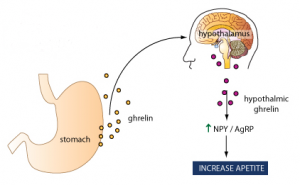Everyone knows that fruits and vegetables are a good source of nutrition and good health. Asparagus is a vegetable that offers numerous benefits, especially disease fighting abilities. There are some people who use asparagus for cancer prevention and treatment. Here are some ways that asparagus can increase health.
Healthy Foods: Asparagus
Asparagus can be used to detox the body. It is high in fiber, so it cleans out the digestive system. This vegetable contains no sodium, no fat, no cholesterol, and is low in calories. It is a great way to get rid of built up toxins in the body.
Since asparagus is rich in potassium, vitamin A, and folate, it can help to turn back the hands of time. This vegetable contains luthathione, an amino acid that has great antioxidant properties. This will eliminate free radical damage that leads to premature aging.
Asparagus can also reduce pain and inflammation because it contains folate. This makes it helpful to people who suffer from arthritis. Folate also lowers the risks of developing heart disease as well.
Finally, this vegetable may be able to prevent osteoporosis. Asparagus contains vitamin K, which is vital to bone formation. This will keep bones strong and healthy.
Asparagus And Cancer
Recently, the Internet has been bombarded with rumors that asparagus is a natural cure for cancer. As previously discussed, this vegetable does bring many health benefits. This vegetable contains vitamin B and folate, two important nutrients that do fight cancer. However, when taken in massive amounts, certain cancers may actually be made worse.
There are many studies that have been done concerning asparagus and cancer. In 2010, The Journal Of The American Medical Association uncovered that combining asparagus and vitamin B6 can lower the risk of lung cancer by 67 percent. Also, a Chinese study identified that asparagus contains asparanin. This slows the growth of liver cancer cells. Asparagus also contains glutathione, an antioxidant linked to keeping cancer away.
Besides these positive studies, there are some negatives regarding consuming asparagus for cancer treatment. Asparagus contains asparagine. Normal cells in the body make this naturally, Leukemia feeds on asparagine in the surrounding normal cells. When leukemia cells are kept from asparagine, they will die. Therefore, a person with leukemia should not eat asparagus and limit the amount of asparagine in the body.
In the end, there is no magic cure for cancer. Even though asparagus contains nutrients that may prevent certain forms of cancer, it would be necessary to ingest massive amounts of the vegetable to see positive results. When a person is trying to stay healthy, it is essential to eat a balanced diet filled with multiple fruits and vegetables. Consuming a normal amount of asparagus will certainly bring many health benefits and will contribute to good health. However, if a person has a cancer that responds well to L-asparaginese, it is wise to limit this vegetable in the diet.

 Food Scientist- Is This the Career for You
Food Scientist- Is This the Career for You
 Fish is an excellent nutritional choice and part of eating a healthy diet. Fish is a major source of long-chain Omega-3 fats and rich in nutrients like selenium and Vitamin D. Being low in saturated fat and high in protein, it is a perfect part of any meal. Eating one to two 3-ounce servings a week reduces the risk of heart disease by 36 percent. The nutritional value of fish extends to the actual fish oil. Eating fish oil in the form of the actual fish or taking tablets is helpful for maintaining a healthy heart and blood vessels. Fish oil improves blood vessel function and lowers triglycerides while easing inflammation. Studies have shown that the nutritional value of fish may even reduce the risk of stroke, Alzheimer’s, and some types of depression.
Fish is an excellent nutritional choice and part of eating a healthy diet. Fish is a major source of long-chain Omega-3 fats and rich in nutrients like selenium and Vitamin D. Being low in saturated fat and high in protein, it is a perfect part of any meal. Eating one to two 3-ounce servings a week reduces the risk of heart disease by 36 percent. The nutritional value of fish extends to the actual fish oil. Eating fish oil in the form of the actual fish or taking tablets is helpful for maintaining a healthy heart and blood vessels. Fish oil improves blood vessel function and lowers triglycerides while easing inflammation. Studies have shown that the nutritional value of fish may even reduce the risk of stroke, Alzheimer’s, and some types of depression.